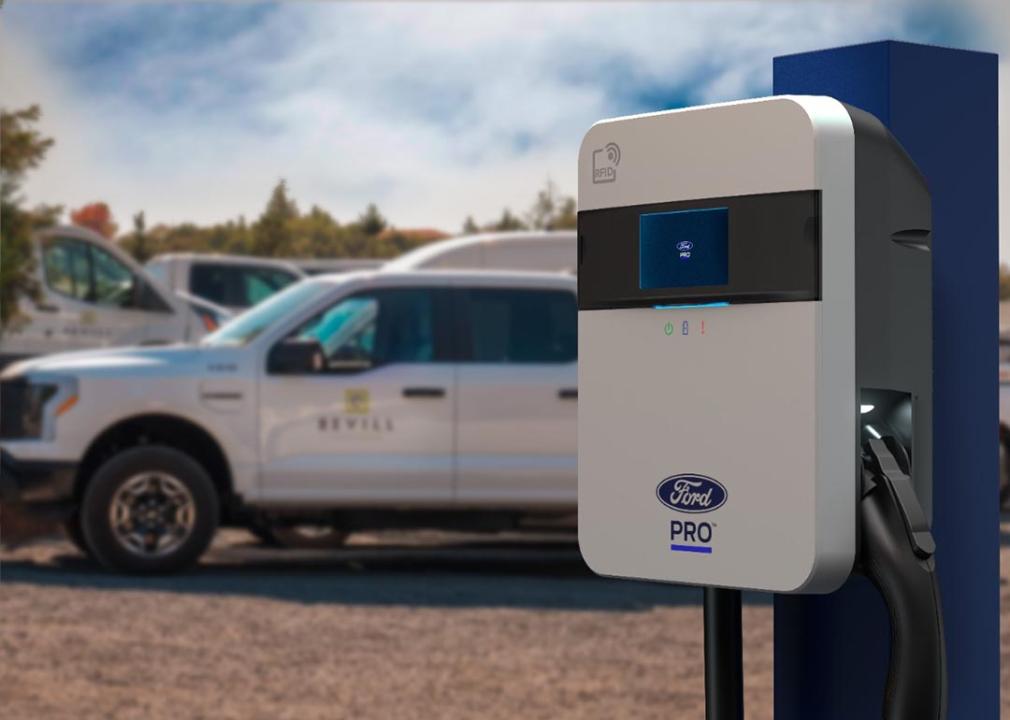
Bidirectional charging is the process of using the energy in an electric vehicle's battery to power other sources. In a typical electric vehicle charging event, a connector from a charging station is plugged into an EV to refill its battery. According to Edmunds, most electric cars will primarily use that stored energy for operating and moving, but those equipped with bidirectional chargers can reverse the power flow from the EV battery to camping equipment, power tools, a house and even the electrical grid itself.
Power from the grid is distributed using alternating current (AC) but EVs store energy in the form of direct current (DC). When an electric vehicle is plugged into an outlet, wall charger, or Level 1 or Level 2 charging station, the AC is converted to DC by a relatively small charger on board the vehicle. In contrast, when an EV is plugged into a DC fast-charging station (such as a Tesla Supercharger), AC is converted to DC by a freestanding charging station, allowing electricity to flow into the EV battery at a much higher rate. For the majority of EVs, the flow of power is one-way, but vehicles capable of bidirectional charging can send the flow of electricity outward. The energy is converted back into AC, where it can be sent to a variety of secondary sources.
There are a few different types of bidirectional charging, including a few that haven't been implemented on passenger EVs.
With V2G, you can charge your vehicle during off-peak hours when electricity is cheapest and there's little strain on the grid. Then, during peak hours, you can sell your electricity back to the grid, helping increase the grid's power supply. At an individual level, you'll earn money (or a discount on your utility bill) by letting the grid use your car as a battery. As EV owners and operators buy into this system en masse, the combined efforts can help normalize the grid's supply during the day, reducing the risk of brownouts and blackouts.
Combining V2G and V2H is another way to reduce your electricity bill. Instead of selling power back to the grid during peak times, you can charge your car at night with cheap electricity, then tap into the battery to run your house's air conditioning in the hot summer afternoons when power is more expensive.
Bidirectional charging is a relatively new technology, and there aren't many electric vehicles equipped with two-way onboard chargers that enable it. At the time of publication, the following vehicles support bidirectional charging in one or more of the types explained above:
The cost of bidirectional chargers and their installation varies. Ford is one of the few EV manufacturers to sell a first-party-branded solution. Its Charge Station Pro (codeveloped with Siemens) is included in the MSRP of an F-150 Lightning with the extended-range battery but not the standard-range battery. At the time of publication, the cost for this station if you opt for a standard-range pack is $1,310. Soon, General Motors will launch kits through its Ultium Home brand to support V2H charging for GM EVs powered by Ultium batteries. In most cases, you'll find bidirectional chargers produced and sold by third-party companies. These chargers include the Wallbox Quasar 2 and dcbel r16, with the latter offering an interesting dual charge cord configuration for households with two EVs.
The Enphase IQ EV charger is another intriguing choice; a single app connects the Enphase bidirectional charging unit, Enphase's wall battery packs and Enphase-enhanced solar panels, giving users an immediate view of how the power is flowing in their house. At the time of publication, pricing for the Quasar 2 was not available, and the dcbel r16 starts at $4,999 (this price climbs as you specify connectors). IQ units cost between $732 and $1,176, depending on amperage. Installation costs are harder to predict, as they will vary by the complexity of the installation and the specifics of your electrical panel.
This story was produced by Edmunds and reviewed and distributed by Stacker Media.